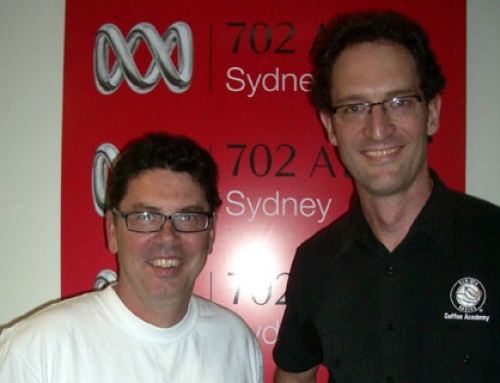In the pursuit of that perfect cup of coffee or espresso, can perfection ever really be achieved? The answer, even accounting for the consideration of individual taste, may simply be no. The reason is the result of four things that coffee are subjected to in its short life from green bean to cup: oxidation, heat, sunlight and humidity. The best we can do is minimize the effects of these things so that our cup remains as fresh “as can be”.
Oxidisation
Oxidisation may be the biggest culprit blocking the pursuit of perfection. Simply put, oxidisation is the exchange of oxygen molecules for molecules of other substances. The result is a new chemical compound that is usually less desirable. This directly affects the aroma in coffee because many of the subtle aromas are the first to be lost due to contact with oxygen. The fruity and more complex aromas and tastes, for example, are among the first to go. Over time oxygen will also affect the more stable aromas of coffee. This is exactly why it is best to grind coffee just before use. Grinding creates more surface area which allows more oxygen to come in contact with the face of the bean. As soon as it does many flavors are immediately lost. It is precisely these damaging effects of oxygen that lead to the use of airtight, nitrogen infused bags with one-way valves. Nitrogen is an inert gas that takes the place of oxygen while the beans are stored in these bags. Because it is inert it leaves the contents alone and does not alter the coffee beans flavour. The one-way valve allows carbon dioxide gases from roasted beans to escape from the bag while preventing oxygen from seeping in.
Stale coffee is witnessed by watery espresso pouring from the group spout as the espresso first starts flowing. If coffee was fresh, (assuming the grind was correct) the espresso would flow like a beautiful, brown strand of spaghetti from the first drop. In other words, the espresso pour will look laden with crema and will not look like black water. Because crema is minimal in stale, oxidised coffee – aroma and to some extent flavour – are compromised.
Leave coffee in a grinder’s chamber overnight and use it the next morning to make and espresso and juxtapose this with a shot made from freshly ground coffee and you will find the difference to be quite amazing.
Heat
We all know that heat is necessary to convert the green bean into a useful one. Heat past roasting is an unwelcomed visitor however. Consider the effects of heat on the coffee bean. During roasting at those controlled temperatures the Maillard Reaction takes place. This is a necessary interaction between the amino acids and carbohydrates in the bean. The result is that famous aroma. When coffee is stored near a heat source, however, this Maillard Reaction continues to take place. Because the heat is obviously at lower temperatures, like that found next to a stove burner or in a hot windowsill, the Maillard Reaction only produces a flavor that is flat, almost like drinking a mixture of paper and paste. The true full-bodied flavors and aromas are downgraded to grocery store shelf tastes, or worse.
Moisture/Humidity
Moisture of any kind, until coffee is brewed, is an enemy of the perfect cup. When we roast coffee oils in the beans are exposed, as can easily be seen on darker roasts. The oils deliver much of the flavor and aroma in coffee. The oil is what produces crema (oil is lighter than water so it floats to the top of the espresso). Moisture, even small amounts found in humidity, destroys the oils and other important effects of roasting for two reasons. First of all it simply dissipates the oils and covers them with a coating that creates an undesirable chemical change. The thermal energy moisture contains increases heat and oxidization (remember water is part oxygen). This creates a browning of the bean. The second reason moisture is harmful is that as the bean is roasted moisture is driven from it. When dry it will act like a sponge (dry sponges pick up water more easily than wet ones) and almost reverse the roasting process. Humidity in the air of only 25% will increase the moisture in coffee by 5%. Increased moisture again invites oxidation. Keeping coffee dry prevents immediate staling. This is one reason why you should not store coffee in the freezer or even a fridge as many people mistakenly do. Condensation will form on the beans as they move towards room temperature.
Sunlight
The last of the big four detriments to a great cup of coffee is sunlight. Sunlight breaks down the sugars and the resulting taste is bitterness.
Families in Europe who are facing various health problem, such families can purchase medicines online without order. In these latter days more than half of men aged 40 to 70 reported some degree of erectile difficulties. Below are four steps about cialis dosage. Let’s find answers to certain questions about ED. While ED is more common among older men, that doesn’t make it ‘normal’. When you order medicaments like Cialis you have to ask your physician about cialis dose. Other question we have to is cialis dosage for ed. A long list of prescription medicaments can lead to erectile dysfunction, including definite blood stress drugs, pain remedies, and several antidepressants. Any remedy may cause some side effects. Sometimes side effects can be really dangerous.





hi there i am wondering how long can ground coffee wait, before extraction,in the grinder?
The fresher the coffee and the more freshly ground the coffee, the better the taste, aroma and crema. We recommend that you grind the coffee as you use it.
coffee should de-gas for two days, however how soon would you use roasted beans and what’s the longest you’d leave them before deeming them ‘stale’?
It is up to the user how long you keep the beans. The longer you leave them the less taste, crema and aroma. We always like to only use freshly roasted coffee for this reason. Home roasting is a great way to go. In fact we are just about to start a home roasting course in Sydney as there is now so much interest in it.